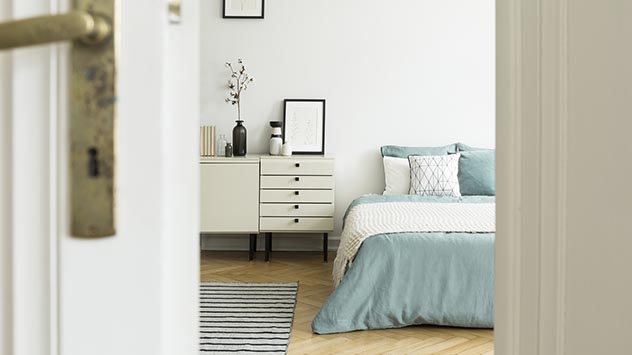Child's Bedroom Downstairs

Parents searching for autism facts know to look for signs and behaviors associated with this developmental disability, but they miss out on a crucial piece of the puzzle: how well their children sleep.
Children with autism spectrum disorder face a number of sleep issues, struggling to fall asleep or stay asleep throughout the night.
Fortunately, parents can help by designing a relaxing bedroom that is conducive to a good night's rest.
Keep these design tips in mind as you make your child's bedroom more comforting, soothing and safe.

1. Reduce Indoor Air Pollution
It's a fact for every child: Poor indoor air quality can compound health problems and affect human development — and that's especially the case for kids with autism.
Researchers have increasingly found links between children exposed to air pollution and autism spectrum disorder. While studies are ongoing, one thing is certain: it's important to fix the air quality in your child's room to facilitate healthier sleep and play.
Consider using MERV 11 air filters in your heating, ventilation and air conditioning system — these block 95 percent of airborne particles, like mold and pollen, which may worsen allergies or cause illness.
While redecorating, choose non-VOC wall paint and add air-purifying plants for an extra air quality boost.
In addition, avoid using chemical cleaners in your home whenever possible.

2. Choose a Soothing Color Scheme
Color plays an important role in an autistic child's bedroom environment.
In fact, children with autism respond well to muted, tranquil colors. While it's tempting to go for a bold, bright palette, what looks good to you may be upsetting for your child.
Instead, choose soft, low-intensity hues and shades for the walls, bedding and floor. Pale blue, green and purple shades are ideal.
If your child has a favorite color they want in their room, try to compromise on a lighter version.
Avoid vivid colors since these can be distracting to children during play or work and will keep them stimulated in the evenings when it's time for rest.
Source: https://todayshomeowner.com/autism-facts-how-to-design-a-childrens-bedroom/

0 Komentar